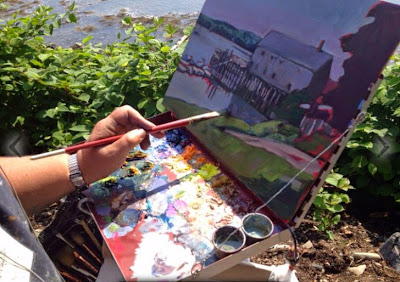 |
| The tail end of the anti-Bill demonstration at the bus headquarters. |
Yesterday I was driving downtown when I passed a demonstration at the bus headquarters. Union members were protesting the decision to stop busing 9,000 Rochester City School District students on the RTS because troublemakers won’t stop fighting. The move will cost 144 jobs. I get their frustration but I was a little offended by the signs that read, “Fire Bill,” particularly as the graphics alluded to the “Kill Bill” movies.
See, I know Bill. He’s not an abstraction but a real, live human being. I thought for a moment about stopping and telling the protesters what a nice guy he is, but I didn’t think it would change their minds. Anyways, I was headed downtown for the National Day of Prayer, and I was running late.
 |
| Listening to prayers on the steps of City Hall. |
On Wednesday a teenager was shot while playing basketball at a little park on Fourth Street. That’s right by the Public Market, and I know that park pretty well. My car was once totaled by a stolen vehicle alongside the jungle-gym. It’s absurd that a kid could be shot in a park full of children in broad daylight. If that happened in tony Loudoun County, VA, where our government muckety-mucks raise their families, the uproar would be appalling. But this is urban Rochester and it warranted three sentences
on the news.
The closer you are to the city, the more aware you are that it is in trouble and that politics doesn’t seem able to fix much. It’s no surprise that the impulse to pray was led overwhelmingly by the inner-city churches. After all, if you live in Henrietta or Webster, the problems of crime and education are a pity, but a vague one.
 |
| Hands stretching in prayer from City Hall to the County Building. |
The National Day of Prayer event started with politicians and formal prayers. But the real action happened when citizens formed a human chain reaching from City Hall to the County Building and prayed like mad for the welfare of our community.
At one point I caught myself thinking, “750,000 people in this county, and only several hundred of us came out. What difference can we possibly make?” But in fact we can. Prayer is not the work of our hands, but a plea for a miraculous intervention. The results, basically, have nothing to do with us.
 |
| This handsome shofar player is Eugene Henn from Brighton. It was a beautiful thing to hear the shofar ringing off that Medina sandstone. |
I ran into Bill’s wife downtown. As we were leaving, I suggested that she take a different route home so she didn’t have to see the protesters. “Maybe I should bring them water bottles,” she mused. The answer to the end of urban violence is to bless the ones who curse you, to stop keeping score, but it’s so hard to do. Anyway, they had folded up shop when I drove past a few minutes later. The prayers had outlasted the demonstrators.
 |
| A crime map for my fair city for the first four months of 2015. For an up-to-date version, see here. |
Meanwhile, while both events were taking place, a woman’s body was found on Hudson Avenue. Just another day in Rochester.
Let me know if you’re interested in painting with me on the Schoodic Peninsula in beautiful Acadia National Park in August 2015. Click here for more information on my Maine workshops! Download a brochure here.































